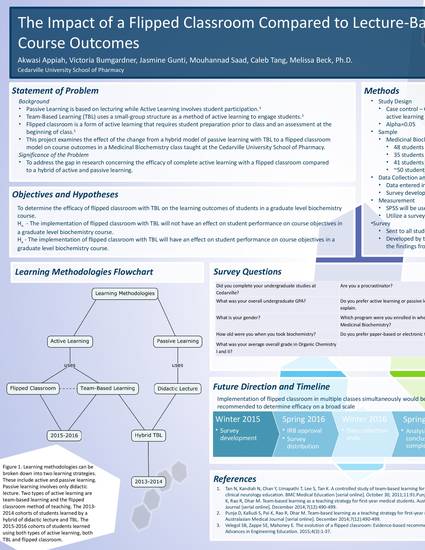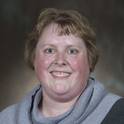
- Flipped classroom,
- team-based learning,
- TBL,
- active learning,
- passive learning,
- lecture-based,
- iRAT,
- tRAT
Education is one of the most vital components that compose a modern society and as such, its improvement and optimization is always sought. This study investigates the efficacy between two learning methods in a graduate level biochemistry course: complete active learning and a hybrid of active and passive learning. Active learning is one method of achieving course outcomes with an emphasis on student responsibility through self-studying of course material followed by classroom discussion. In comparison, passive learning emphasizes instructor responsibility through didactic lecturing of course material. The aftermath results following a hybrid form of active and passive learning (in-class didactic lecture and team-based learning) versus complete active learning (self-studying course material before class, classroom discussion, and team-based learning) will be compared among four cohorts of biochemistry students. A survey will be sent out seeking to gather qualitative and quantitative data that may later contribute to the confounding of main objective results. Descriptive statistics analyses will sort, organize, and filter survey responses in order to examine whether or not differences there affected the objective. Main objective results will rely on exam and readiness assessment test (RAT) scores from all four cohorts of students. Various biochemistry topics will be compared per these scores. An independent t-test, one-way ANOVA, two-way ANOVA, and ANCOVA test will be used to assess all the data. Within some of these statistical tests, survey responses will be accounted, assessed, and controlled so as not to convolute findings. These factors include: continuous independent variables (Example: age), nominal variables (Example: undergraduate status), and covariates (Example: GPA). The hypothesis of this study is that there will be a statistically significant difference between the cohorts that use a hybrid of active and passive learning and the cohorts that use complete active learning.
Available at: http://works.bepress.com/melissa_beck/81/
